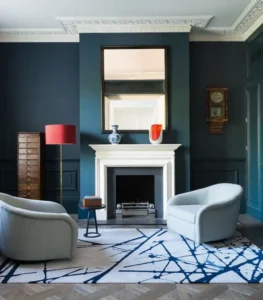1-Evaluating the Space
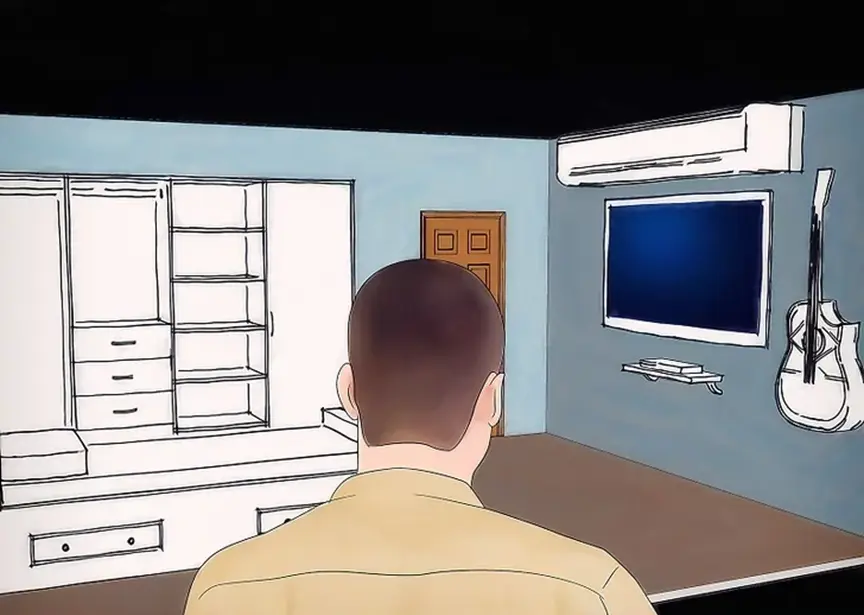
1. Get a feel for the space as a whole.
Spend some time thinking about how your room looks and feels now, and what you want to change or keep. Are there features in the room you want to play down or emphasize? Do you want your room to feel airier or cozier? The color you use can help you achieve the look and feel you have in mind.[1]
- High contrast either in color or intensity can create a visual focal point of some feature in your room that you really love .
- Avoid sharp contrasts between color or intensity if you want to downplay areas or features in your room .
- Light or neutral colors can open up a small space .
- Deep, rich colors in warm tones will create a cozy, inviting space .
- Check to see if you can see other rooms from the room you plan to paint. If so, you’ll want to make sure the colors of both rooms look good together. You don’t have to paint the rooms the same color, but they should be coordinated .
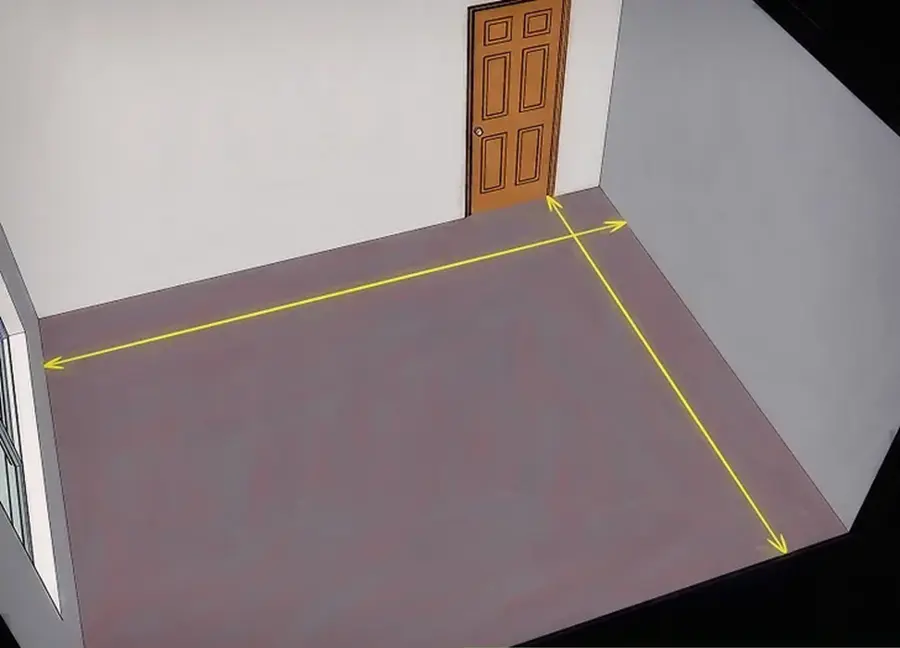
2. Evaluate the room’s dimensions.
You want to have a sense of the proportions of the room as well as how much paint you are going to need based on the square footage.
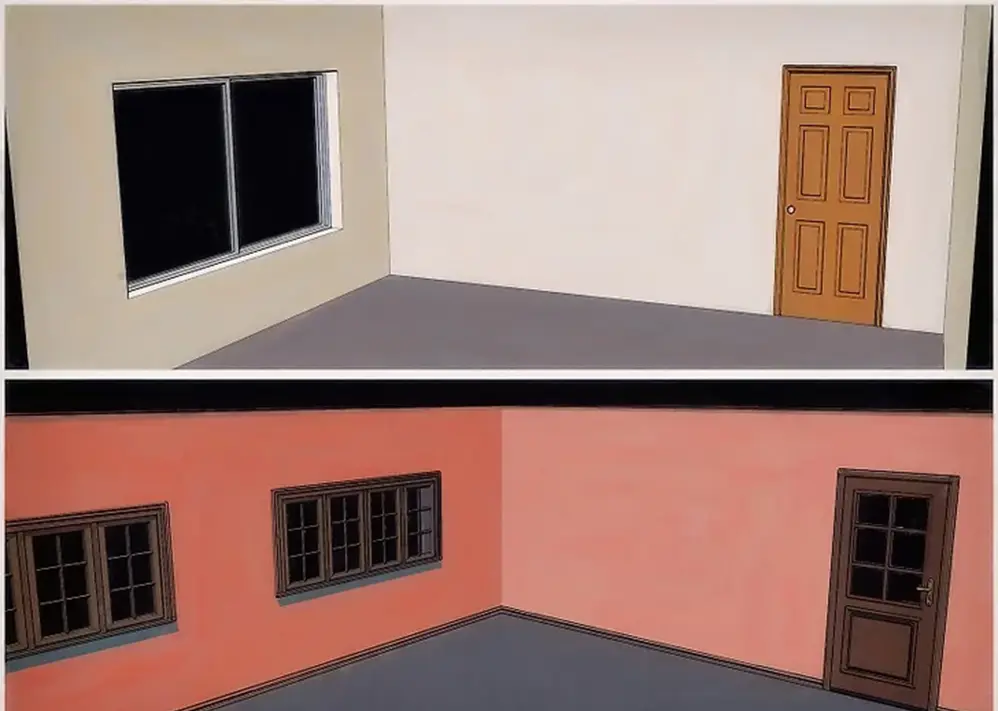
3. Choose a color based on room size.
Wall color can change the way room size feels or appears. If you have a very large or a very small room, select a color that will make the most of your space.[2]
- Avoid sharp contrasts between colors in small rooms. Try cooler tones in neutral shades to help the room feel larger.
- If you have a small room but have your heart set on a dark color, you could open up the space by painting a lighter accent wall or using the dark color as part of a pattern or stripes.
- Large rooms can feel more cozy with medium to deep colors in warm tones.
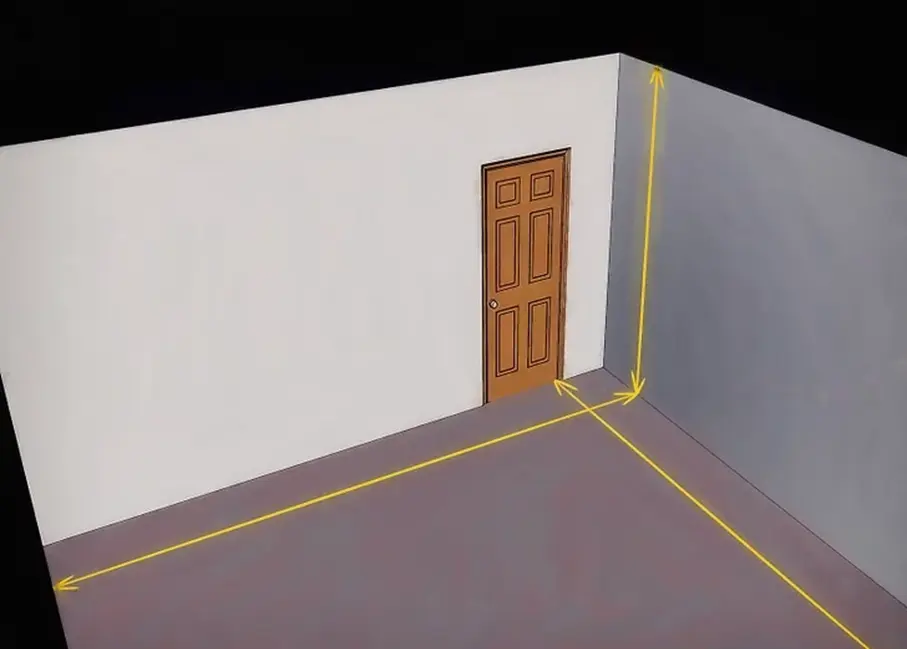
4. Compare the ceiling height to the room’s size.
How large or small the room feels or appears to be can be affected by the ceiling. For instance, a large room can feel smaller if the ceiling is low, and a smaller room can feel bigger if the ceiling is very high.[3]
- With a large room and a high ceiling, or a small room with a low ceiling, a contrast in color tone or intensity can visually separate the walls and ceiling. This will make a larger space feel more intimate and a small space feel more expansive.
- If your room is small and has a high ceiling, or is large with a low ceiling, keep the color tones the same. Make sure that the contrast between the walls and ceilings is moderate or low.

5. Take the amount of light into consideration.
Room color appearance can change depending on how much light the room gets. Also, the kind of light in the room is a factor in how the color looks.[4]
- Natural light will change during the day, so how it affects wall color will change too. Try out your color options first. Paint sections of the walls and check to see how it looks throughout the day.
- Lighting fixtures also impact how colors will look. Paint a few sections in your color options, and then turn on the lights you will use most often to see how they affect the color.
- Lighting can also affect the way a color looks depending on the underlying tone of the shade. Paint comes in three tones, which are warm, cool, and neutral. Warm colors have a red undertone, while cool colors have a blue undertone. Lighting can bring out these undertones.

6. Consider the room’s features.
If your room has one or two large unbroken walls, the color you choose will have a big impact on the room overall. If there are multiple doors and windows throughout, your room will have a lot of color contrast between trim and door colors, and the wall color.[5]
- If you want to downplay the contrast, paint all of the trim, doors, and window encasements the same color. Choose a color that compliments the wall color.
- If you want to play up the contrast, you may want to choose a glossy white for your trim, which will give the room a clean look.

7. Paint the ceiling in a color that complements the walls.
When you change the wall color and trim color, you need to make sure the ceiling coordinates and looks just as fresh as the newly painted walls. In addition, just as the tone and shade can change how the room’s proportions feel, the ceiling color will have the same effect on how high or low the ceiling seems to be.[6]
Method2
Picking the Right Paint Color
1. Use your smartphone or tablet to “try” colors.
Many places that sell paint and home decor items have websites or apps that will let you sample different colors virtually. There are also free apps that can do the same thing. These kinds of tools are great for getting a sense of how things will look overall, but keep in mind the digital version is only an approximation of how colors will coordinate in the actual space.[7]

2. Pick up paint color chips.
Places that sell paint will have printed cards that show different paint colors and color families. These samples will be organized by paint brand as well as by tone and color. This is a really good way to start the process of choosing a color. Take a handful home and see how they look in your room.

3. Ask for advice.
People working in the paint department can help you decide on paint finishes as well as colors and tones. Some places have decorators on staff to advise customers about getting different looks by using different paint colors and finishes.[8]

4. Test paint colors on your walls.
Ultimately there is no substitute to putting paint on the wall in your room. You can get the most accurate sense of how a color will look from seeing it in your specific space.[9]
- Always put two coats up when testing paint color.
- Put paint on two or three different walls to get a feel of the overall effect in your room.
- Make the test area big enough to be able to really see how the color will work. A 2’ x 2’ square at eye level should be adequate.
- Paint a thick stripe near the flooring to be sure it works with your floor color and texture.
- Sit with the paint color for 3 days to give yourself time to decide if it really works for you. Check the color in different lighting throughout the day so that you get a good idea of what it will look like once it’s on your walls.

5. Test paint color on a foam core board.
If it isn’t possible to put sample colors up on your walls, try making a foam core board substitute. You can get a pretty accurate sense from this method as well.[10]

